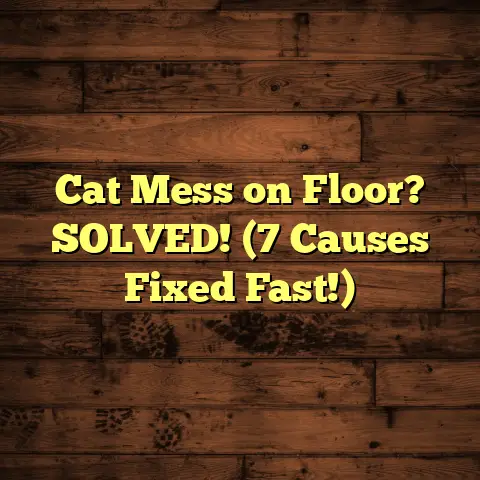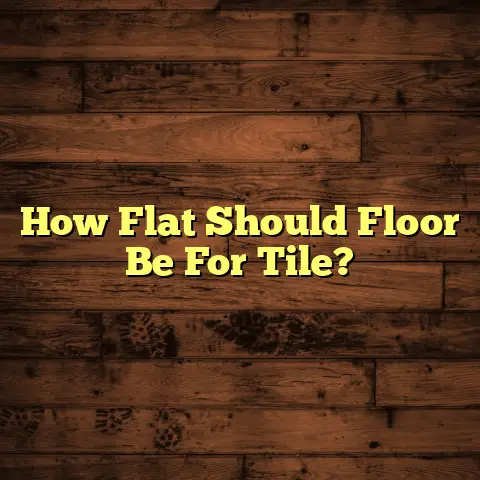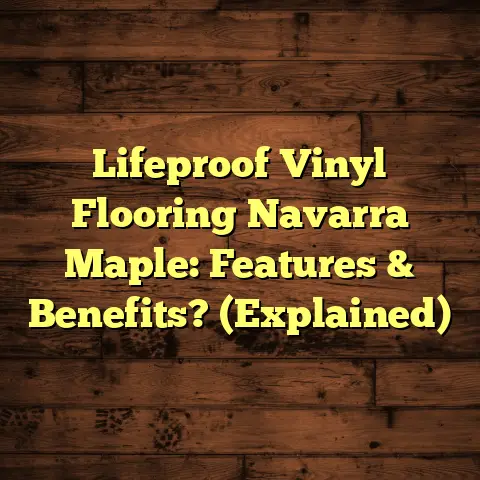Cost to Refinish Hardwood Floors in Venezuela
Refinishing hardwood floors can be a cost-effective way to restore their beauty and extend their lifespan. However, the costs involved vary greatly based on several factors, particularly in a unique market like Venezuela.
Overview of Cost Factors
1. Area Size
The size of the area being refinished significantly impacts the overall cost. Larger areas will require more materials and time, leading to higher labor costs. The cost is generally calculated per square meter. For example, if you’re looking to refinish a small room of about 20 square meters versus a larger living area of 100 square meters, the price per square meter may slightly decrease with the larger area due to economies of scale, but overall the total cost will be significantly higher.
2. Type of Hardwood
Different types of hardwood come with varying price points. Exotic woods tend to be more expensive than domestic varieties. Common types include:
- Oak: Affordable and widely available, oak is favored for its durability and classic look.
- Maple: Known for its hardness and fine grain, maple is moderately priced and great for high-traffic areas.
- Cherry: A more expensive option renowned for its rich color and smooth texture.
- Walnut: Often considered a high-end wood, walnut offers a luxurious finish but is also pricier.
3. Labor Costs
Labor costs can fluctuate based on local demand, the experience of the contractors, and economic conditions. In Venezuela, where economic instability is prevalent, labor costs might vary significantly from one region to another. It’s essential to gather multiple quotes from different contractors to find a competitive price. Keep in mind that highly skilled labor may come at a premium but can save you money in the long run by ensuring quality work.
4. Additional Considerations
Several additional factors can influence the total cost:
- Floor Removal: If old flooring needs to be removed before refinishing, this adds to labor costs. Removing carpets or other types of flooring can also require additional disposal fees.
- Subfloor Replacement: Damaged subfloors may require replacement, increasing material costs. Inspecting the subfloor’s condition before proceeding with refinishing can help avoid surprises during the project.
- Material Grade: Higher-grade materials mean higher costs but can lead to a longer-lasting finish. It’s essential to choose materials that align with your budget while considering longevity and aesthetics.
- Room Layout: Complex layouts may require more intricate work, increasing labor hours. Rooms with multiple angles or built-in features will take longer to refinish than standard rectangular spaces.
- Installation Type: Different techniques (e.g., sanding, staining) can vary in cost and complexity. Some finishes may require multiple coats or different applications depending on the desired look.
Detailed Cost Breakdown
Average Costs
The following are estimated costs associated with refinishing hardwood floors in Venezuela:
- Basic Refinishing: $15 – $25 per square meter
- Sanding and Staining: $20 – $35 per square meter
- Complete Restoration (including repairs): $30 – $50 per square meter
These prices reflect average market rates but can fluctuate based on specific conditions and contractor pricing.
Example Project Costs
For various sizes of projects, the costs could be broken down as follows:
- Small Room (20 m²):
- Basic Refinishing: $300 – $500
- Sanding and Staining: $400 – $700
- Complete Restoration: $600 – $1,000
- Medium Room (50 m²):
- Basic Refinishing: $750 – $1,250
- Sanding and Staining: $1,000 – $1,750
- Complete Restoration: $1,500 – $2,500
- Large Area (100 m²):
- Basic Refinishing: $1,500 – $2,500
- Sanding and Staining: $2,000 – $3,500
- Complete Restoration: $3,000 – $5,000
These figures provide a general idea of what to expect when budgeting for your refinishing project.
Comparing Hardwood with Alternative Flooring Options
Laminate Flooring
Laminate flooring has become an increasingly popular choice due to its affordability and ease of installation.
- Cost: $5 – $15 per square meter
- Pros: Less expensive than hardwood, easier to install, and available in various styles that mimic wood.
- Cons: Less durable than hardwood and cannot be refinished; once damaged, it typically needs to be replaced entirely.
Vinyl Flooring
Vinyl flooring offers versatility and is known for its water-resistant properties.
- Cost: $10 – $20 per square meter
- Pros: Water-resistant, low maintenance, available in various designs mimicking wood or tile.
- Cons: Often viewed as less aesthetically pleasing compared to hardwood; can feel less “authentic.”
Carpet
Carpet provides warmth and comfort underfoot.
- Cost: $15 – $30 per square meter
- Pros: Soft underfoot, good insulation properties make it suitable for colder climates.
- Cons: Can stain easily and requires regular cleaning; may harbor allergens if not cleaned properly.
Cost Comparison Summary
When considering flooring options for your home in Venezuela, hardwood flooring may have a higher upfront cost but offers significant long-term benefits in terms of durability, aesthetics, and potential increases in property value.
| Flooring Type | Cost per m² | Pros | Cons |
|---|---|---|---|
| Hardwood | $15 – $50 | Durable, valuable | Higher initial cost |
| Laminate | $5 – $15 | Affordable, easy installation | Cannot be refinished |
| Vinyl | $10 – $20 | Water-resistant | Less aesthetically pleasing |
| Carpet | $15 – $30 | Soft, warm | Requires regular cleaning |
Signs Your Hardwood Floors Need Replacement
Understanding when it’s time to replace your hardwood floors rather than refinish them is critical in managing your home’s upkeep effectively. Here are some signs that replacement might be necessary:
- Deep Scratches or Gouges: If refinishing won’t remove deep damage or if there are areas where the wood has been significantly compromised.
- Cupping or Warping: This often indicates moisture issues that could worsen over time. If your floors are severely warped or cupped due to water damage or high humidity levels, replacement may be the best option.
- Severe Discoloration: Stains that don’t respond to cleaning methods may signify that the wood is damaged beyond repair or that the finish has worn off to an extent where replacement is more economical.
- Structural Issues: If you notice that your floors are loose or squeaky throughout large areas, this could indicate underlying structural issues with your subfloor or joists.
- Inconsistent Appearance: If your floors look worn down in some areas but have a nice sheen in others after refinishing attempts, it may suggest that they need replacing rather than refinishing.
Refinishing vs Replacement
When deciding between refinishing or replacing hardwood floors, homeowners should consider several aspects:
Condition of Existing Floors
If the wood is still structurally sound and has minimal damage or wear, refinishing can be a viable option. However, if the floors have multiple signs of damage (such as deep scratches or warping), replacement may be necessary.
Desired Aesthetic Changes
If you wish to change the wood type or style entirely (for instance, moving from oak to walnut), replacement is the best route. Alternatively, if you’re looking to refresh the existing look without changing the wood type significantly, refinishing could suffice.
Budget Considerations
Refinishing generally costs less than complete replacement. However, if your existing flooring requires extensive repairs before refinishing can occur—such as replacing damaged boards—this could negate any savings from choosing to refinish over replace.
Pros and Cons of Hardwood Flooring
Pros
- Timeless Beauty and Elegance: Hardwood floors add a classic touch to any home décor style.
- Durability and Longevity: With proper care and maintenance, hardwood floors can last for decades.
- Increases Property Value: Homes with hardwood flooring often sell for higher prices than those without.
- Hypoallergenic Qualities: Unlike carpeted surfaces that trap allergens and dust mites, hardwood floors are easier to clean and maintain.
- Versatile Design Options: Available in various colors and finishes that can match any design preferences.
Cons
- Higher Initial Cost Compared to Alternatives: The upfront investment in quality hardwood can be substantial compared to laminate or vinyl options.
- Susceptibility to Water Damage: Hardwood floors can warp or swell when exposed to excessive moisture; thus they require careful maintenance in humid environments.
- Requires Regular Maintenance: To keep them looking their best, hardwood floors need regular cleaning and periodic refinishing every few years.
- Noise Levels: Hardwood floors can amplify sounds within a home compared to carpeted surfaces which absorb sound.
- Temperature Sensitivity: Wood expands and contracts with temperature changes; thus it may be affected by seasonal shifts if not properly installed.
Cost Differences Between Professional Installation and DIY
Professional Installation
Hiring professionals for refinishing hardwood floors ensures quality workmanship but comes at a price:
- Labor costs typically range from $10 to $20 per square meter.
- Professionals have access to specialized tools (like sanders) that can lead to a better finish than what most DIY enthusiasts could achieve.
- Additionally, professional contractors often provide warranties for their work which adds peace of mind for homeowners.
Benefits of Professional Installation:
- Expertise: Trained professionals know how to handle various types of wood and finishes effectively.
- Time-Efficiency: Professionals can usually complete jobs more quickly than DIY efforts due to experience.
- Guaranteed Workmanship: Many contractors offer warranties which protect homeowners against future issues related to their refinishing project.
DIY Installation
While DIY can save on labor costs (which could account for 50% or more of the total project cost), it requires careful consideration:
Tools Needed:
If you decide to go the DIY route for refinishing hardwood floors:
- Sanders ($50 – $200): Essential for leveling the floor surface before applying finish.
- Stains and Sealers ($50 – $150): Necessary for achieving the desired color and protecting the wood from damage post-refinishing.
- Miscellaneous Tools ($20 – $100): This includes brushes/rollers for finishing coats as well as safety gear like masks and goggles.
Factors to Consider for DIY:
- Skill Level Assessment: Assess your own ability honestly; improper installation can lead to costly mistakes that may require hiring professionals later on anyway.
- Time Commitment: Refinishing can be time-consuming—especially if you’ve never done it before—so factor in how much time you have available versus how quickly you want results.
- Quality Control: Even if you save on labor by doing it yourself, subpar results may detract from your home’s overall aesthetic value unless you have prior experience.
Questions to Ask Hardwood Flooring Contractors
Choosing the right contractor is crucial for a successful hardwood floor refinishing project. Here are essential questions you should ask potential contractors:
- What is your experience with refinishing?
- Understanding their background will help gauge their expertise level.
- Can you provide references from past clients?
- References allow you to verify their previous work quality and customer satisfaction levels.
- What is included in your estimate?
- Clarify whether materials (like stains/sealers) are included in their quote or if they are separate expenses.
- How long will the project take?
- Knowing timelines helps manage expectations regarding disruption in your home during the process.
- What type of finish do you recommend?
- Different finishes offer varying levels of durability; ensure they align with your lifestyle requirements (e.g., pets, children).
- Do you have insurance?
- Ensure they carry liability insurance; this protects both parties should any accidents occur during the project.
- What preparation do I need before you start?
- Knowing what steps you’ll need to take ahead of time will make sure everything runs smoothly on installation day.
Care and Maintenance Tips for Hardwood Floors
To maximize the longevity of your hardwood floors:
- Regular Sweeping/Vacuuming:
- Remove dirt particles regularly; grit can scratch surfaces over time if left unchecked.
- Use Damp Mops with Appropriate Cleaners:
- Avoid excessive moisture when mopping; use products specifically designed for hardwood care.
- Avoid Excessive Moisture:
- Wipe spills immediately; standing water can warp wood fibers if allowed contact over time.
- Place Rugs at Entryways:
- Rugs can catch debris before it enters your living space; this helps minimize wear on high-traffic areas of flooring.
- Refinish Every Few Years:
- Depending on wear-and-tear levels (usually every 5–10 years), consider scheduling professional refurbishing sessions as needed based on usage levels.
- Maintain Proper Humidity Levels:
- Keeping indoor humidity between 30%–50% helps prevent wood from drying out or absorbing excess moisture.
- Protect From Sunlight:
- Consider using window treatments that block UV rays; prolonged sun exposure can fade wooden surfaces over time.
- Use Protective Pads Under Furniture Legs:
- This prevents scratches when moving furniture around; felt pads provide cushioning against hard surfaces.
- Avoid Harsh Chemicals/Heavy Cleaners:
- Stick with products designed specifically for hardwood floor cleaning; harsh chemicals can strip finishes or damage wood fibers themselves.
Conclusion
Refinishing hardwood floors in Venezuela requires careful consideration of various factors affecting costs, including area size, type of wood, labor expenses, and additional considerations like subfloor condition or removal needs. Homeowners should weigh the pros and cons of hardwood against alternative flooring options while considering their specific needs and budget constraints.
By understanding these elements thoroughly—from what kinds of woods exist within local markets down through fundamental maintenance practices—homeowners can make informed decisions that enhance their home’s aesthetic appeal while maximizing value over time through appropriate care strategies post-installation/refinishing processes alike!
Incorporating all these insights into your decision-making process will not only prepare you financially but also ensure that your investment into flooring pays off beautifully for years down the line!





